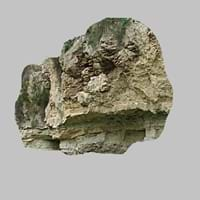Definition
A water-soluble mineral sediment resulting from concentration and crystallization by evaporation from an aqueous solution
Laterite rock is a type of Sedimentary rock which is rich in iron and aluminium, formed in hot and wet tropical areas
Discoverer
Usiglio
Francis Buchanan-Hamilton
Etymology
From a sediment left after the evaporation
From Latin later brick, tile + -ite1
Class
Sedimentary Rocks
Sedimentary Rocks
Sub-Class
Durable Rock, Soft Rock
Durable Rock, Soft Rock
Group
Not Applicable
Not Applicable
Other Categories
Coarse Grained Rock, Fine Grained Rock, Medium Grained Rock, Opaque Rock
Fine Grained Rock, Opaque Rock
Texture
Earthy
Earthy, Massive, Porphyritic
Color
Colourless, Green, Grey, Silver, White
Brown, Buff, Red
Durability
Durable
Durable
Appearance
Glassy, Vesicular and Foilated
Rough and Banded
Interior Uses
Decorative Aggregates, Entryways, Flooring, Homes, Interior Decoration
Decorative Aggregates, Flooring, Interior Decoration
Exterior Uses
As Building Stone, As Facing Stone, Garden Decoration, Paving Stone
As Building Stone, As Facing Stone, Garden Decoration
Other Architectural Uses
Curbing
Curbing
Construction Industry
As a Flux in the Production of Steel and Pig Iron, As a Sintering Agent in Steel Industry to process Iron Ore, As Dimension Stone, Cement Manufacture, for Road Aggregate, Making natural cement, Manufacture of Magnesium and Dolomite Refractories
Cobblestones, for Road Aggregate, Landscaping, Roadstone
Medical Industry
Taken as a Supplement for Calcium or Magnesium
Not Yet Used
Antiquity Uses
Artifacts
Artifacts, Monuments, Sculpture
Commercial Uses
Used in the manufacture of Ceramic Powder, Used in the preparation of Sulfuric Acid and Silicon Diborite
An Oil and Gas Reservoir, Source of bauxite, Used in aquariums
Types
Not Available
Not Available
Features
Generally rough to touch, Splintery, Veined
Is one of the oldest rock, Very fine grained rock
Archaeological Significance
Monuments
Not Yet Used
Used
Famous Monuments
Not Applicable
Data Not Available
Sculpture
Not Yet Used
Used
Famous Sculptures
Not Applicable
Data Not Available
Figurines
Not Yet Used
Used
Formation
Evaporite is water-soluble mineral sediment which forms from concentration and crystallization by evaporation from an aqueous solution.
Laterite is a type of sedimentary rock which is generally a reddish weathering product of basalt.
Mineral Content
Calcite, Cancrinite, Gypsum, Kyanite, Magnetite
Aluminum Oxides, Biotite, Hematite, Hornblade, Iron Oxides, Manganese Oxides, Micas, Muscovite or Illite, Plagioclase, Pyroxene
Compound Content
CaMg(CO3)2, CaO, Calcium Sulfate, KCl, MgO, NaCl
Aluminium Oxide, CaO, Iron(III) Oxide, FeO, Potassium Oxide, MgO, MnO, Sodium Oxide, Phosphorus Pentoxide, Silicon Dioxide, Titanium Dioxide
Types of Metamorphism
Burial Metamorphism, Cataclastic Metamorphism, Contact Metamorphism, Impact Metamorphism, Regional Metamorphism
Not Applicable
Types of Weathering
Not Applicable
Biological Weathering, Chemical Weathering
Types of Erosion
Not Applicable
Chemical Erosion, Water Erosion, Wind Erosion
Grain Size
Medium to Fine Coarse Grained
Fine Grained
Fracture
Conchoidal
Conchoidal
Porosity
Less Porous
Highly Porous
Luster
Subvitreous to Dull
Dull
Compressive Strength
Not Available
Cleavage
Perfect
Not Applicable
Toughness
Not Available
Not Available
Specific Gravity
2.86-2.99
Not Available
Transparency
Translucent
Opaque
Density
2.8-2.9 g/cm3
Not Available
Specific Heat Capacity
Not Available
Resistance
Heat Resistant, Pressure Resistant
Heat Resistant, Pressure Resistant
Deposits in Eastern Continents
Africa
Not Available
East Africa, Western Africa
Europe
United Kingdom
England, Romania, Scotland
Others
Not Yet Found
Not Yet Found
Deposits in Western Continents
North America
USA
Canada, USA
South America
Colombia, Paraguay
Not Yet Found
Deposits in Oceania Continent
Australia
Central Australia, Western Australia
Central Australia, Western Australia
All about Evaporite and Laterite Properties
Know all about Evaporite and Laterite properties here. All properties of rocks are important as they define the type of rock and its application. Evaporite and Laterite belong to Sedimentary Rocks.Texture of Evaporite is Earthy whereas that of Laterite is Earthy, Massive, Porphyritic. Evaporite appears Glassy, Vesicular and Foilated and Laterite appears Rough and Banded. The luster of Evaporite is subvitreous to dull while that of Laterite is dull. Evaporite is available in colourless, green, grey, silver, white colors whereas Laterite is available in brown, buff, red colors. The commercial uses of Evaporite are used in the manufacture of ceramic powder, used in the preparation of sulfuric acid and silicon diborite and that of Laterite are an oil and gas reservoir, source of bauxite, used in aquariums.










